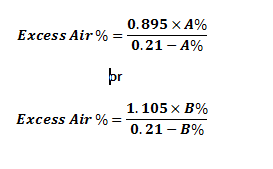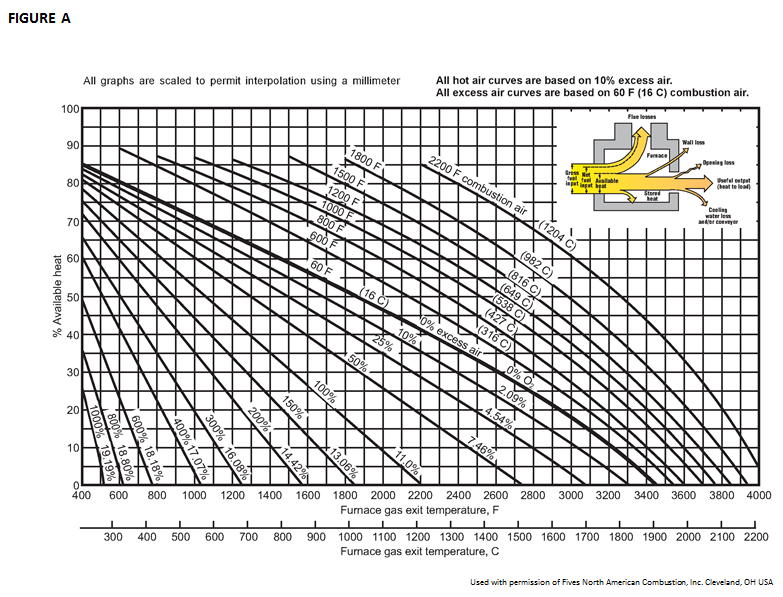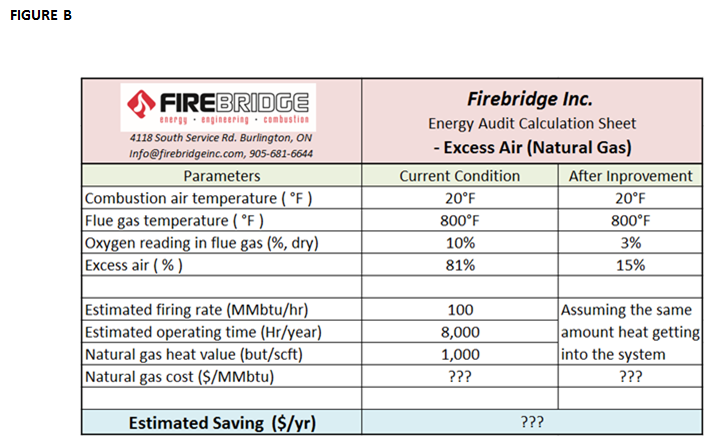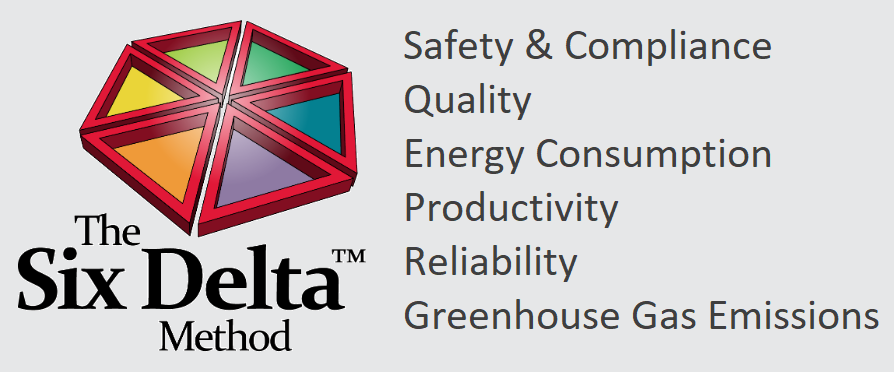Many operators of industrial furnaces are losing significant amounts of energy because of too much air entering the furnace, resulting in heat loss through flue gases. The excess air results in oxygen that isn’t consumed during combustion, and this oxygen absorbs otherwise usable heat and carries it out of the stack. The chemically ideal amount of air entering a furnace is just enough for all the oxygen in the air to be consumed. However, this ideal (known as the stoichiometric air-to-fuel ratio) is difficult to reach because fuel and air don’t completely mix, meaning that a certain amount of excess air will always be necessary for complete combustion. In fact, too little excess air results in inefficient burning of fuel, soot buildup, and unnecessary greenhouse gas emissions.
The optimum level of excess air will vary between furnaces and applications, but generally, excess air of 10-15% is an attainable, optimum goal while maintaining either the current input temperature or production output level, whichever is desired. If you have a furnace with higher excess air than 10-15%, you have a clear opportunity to lower your energy costs by reducing air input at the burner and by closing any leaks in the furnace. When the air/fuel ratio is optimized, the resulting energy savings usually ranges from 5% to >25%.
The amount of excess air within the system can be determined by analyzing the amount of oxygen in the flue gas. Use natural gas combustion as an example. Assuming the CO level in flue gas is very low and incomplete combustion can be neglected, oxygen content in flue gas can be measured in two numbers: dry reading A% or wet reading B%. With those measurements, the following formulas can be used to calculate excess air:  For example, if the oxygen dry reading in flue gas is 2.5%, then the excess-air calculation would be: 0.895 x 0.025 / (0.21-0.025) = 12.1% excess air. Too much excess air leads to lower flame temperature. That means less heat gets into the system. Also, excess air must heat up to flue gas temperature, which consumes extra energy. Using an excess air chart (Figure A), you can determine the increase in available heat possible by decreasing excess air to the lowest level that still achieves complete combustion within your furnace. Available heat is usually expressed as a percentage representing the amount of heat remaining in the furnace (i.e., not lost through flue gases or leakage) as a fraction of the heat input.
For example, if the oxygen dry reading in flue gas is 2.5%, then the excess-air calculation would be: 0.895 x 0.025 / (0.21-0.025) = 12.1% excess air. Too much excess air leads to lower flame temperature. That means less heat gets into the system. Also, excess air must heat up to flue gas temperature, which consumes extra energy. Using an excess air chart (Figure A), you can determine the increase in available heat possible by decreasing excess air to the lowest level that still achieves complete combustion within your furnace. Available heat is usually expressed as a percentage representing the amount of heat remaining in the furnace (i.e., not lost through flue gases or leakage) as a fraction of the heat input.

You can then determine the cost savings that would be achieved by decreasing excess air to increase available heat. Total energy saving is affected by excess air, combustion air temperature, flue gas temperature, cost of fuel, etc. (Figure B).

Realistically, oxygen content in flue gas changes when the firing rate changes. For example, consider a 100 million btu/hr burner with a 10:1 turndown. When it is firing at 100 million btu/hr, the excess air is 15%. However, at the minimum firing rate of 10 million btu/hr, the excess air could be 100%. To get an accurate estimate of the energy savings, systematic measurement and calculation needs to be done. If you want a more accurate estimation, please contact Firebridge at info@firebridgeinc.com.


